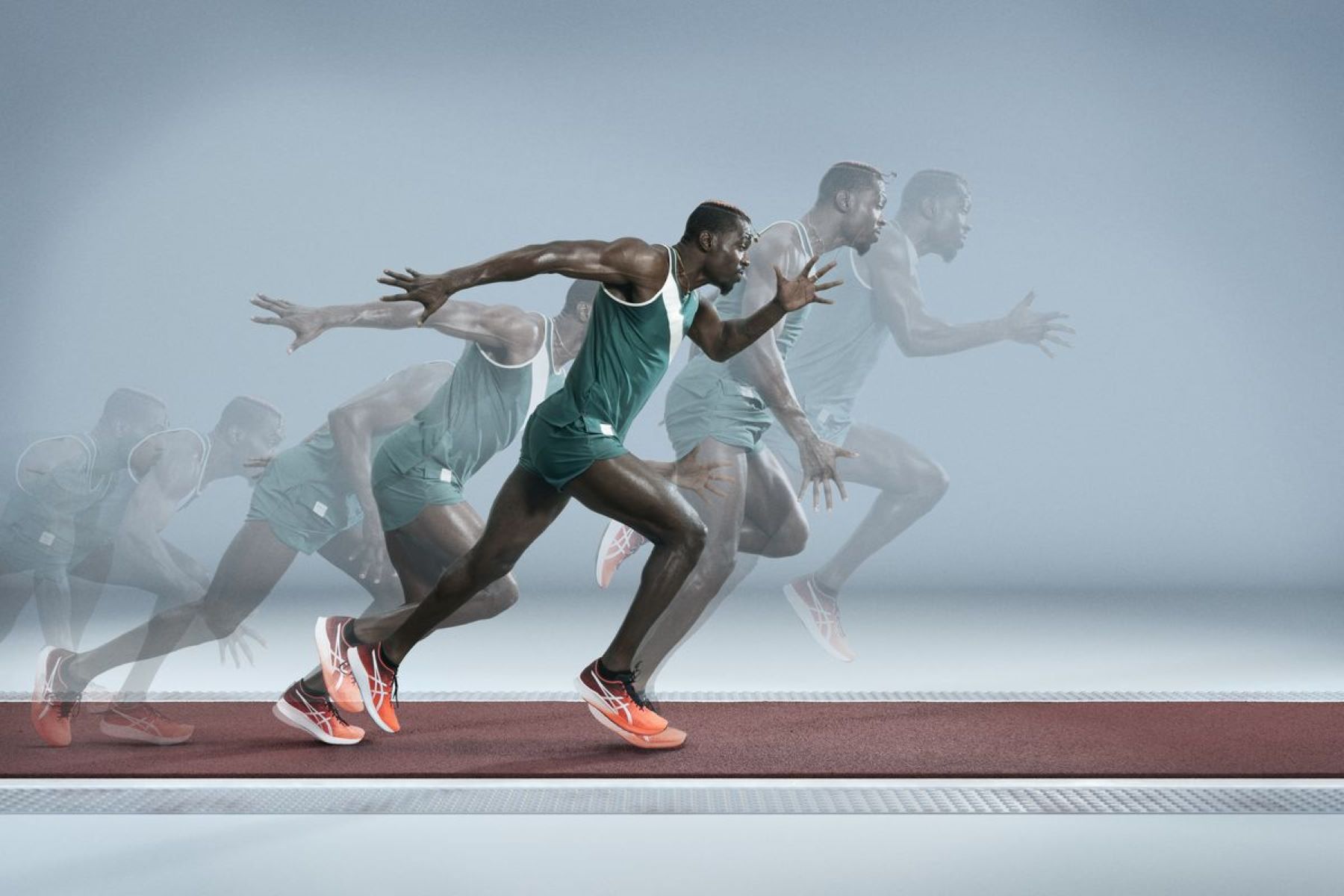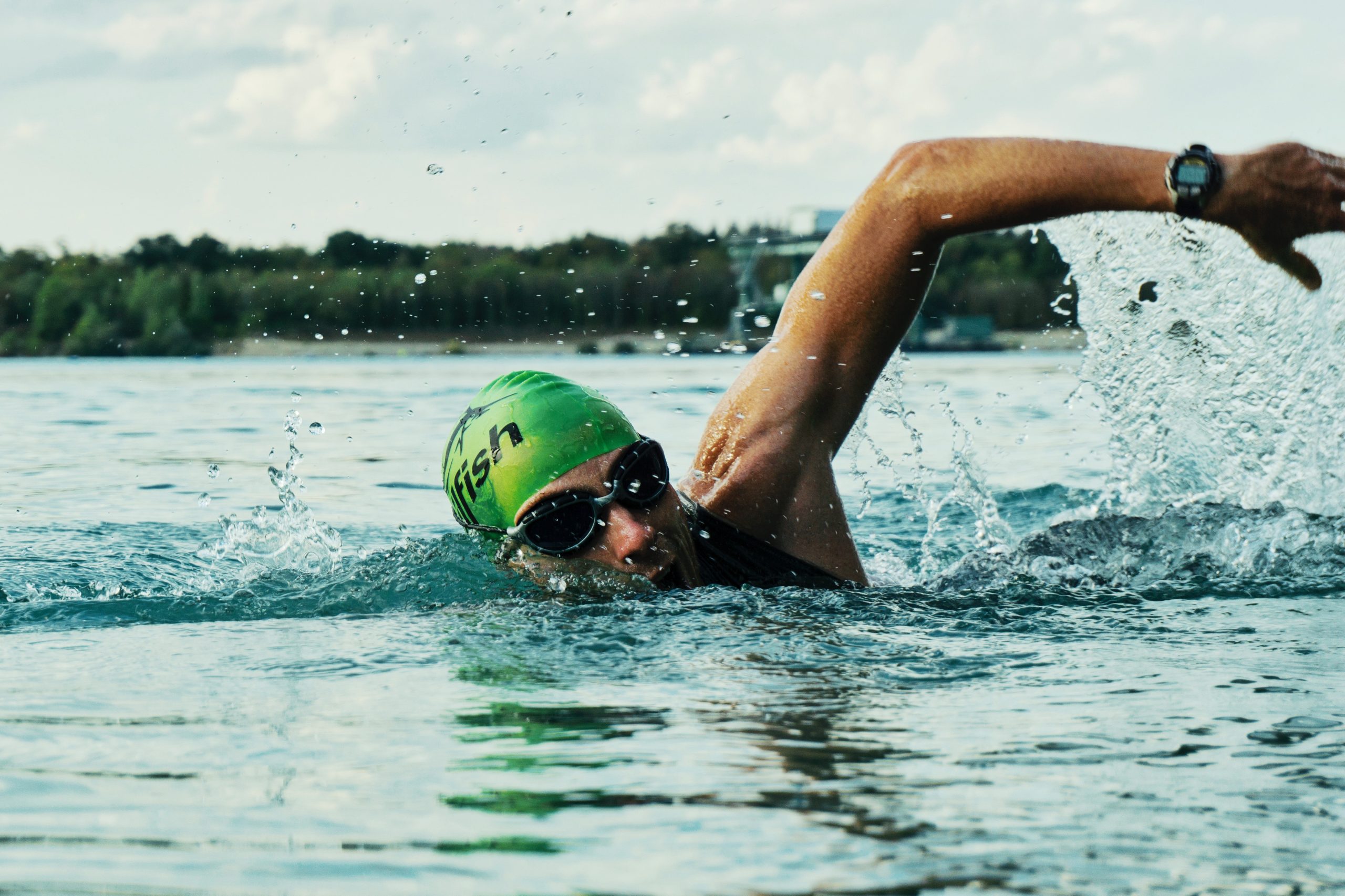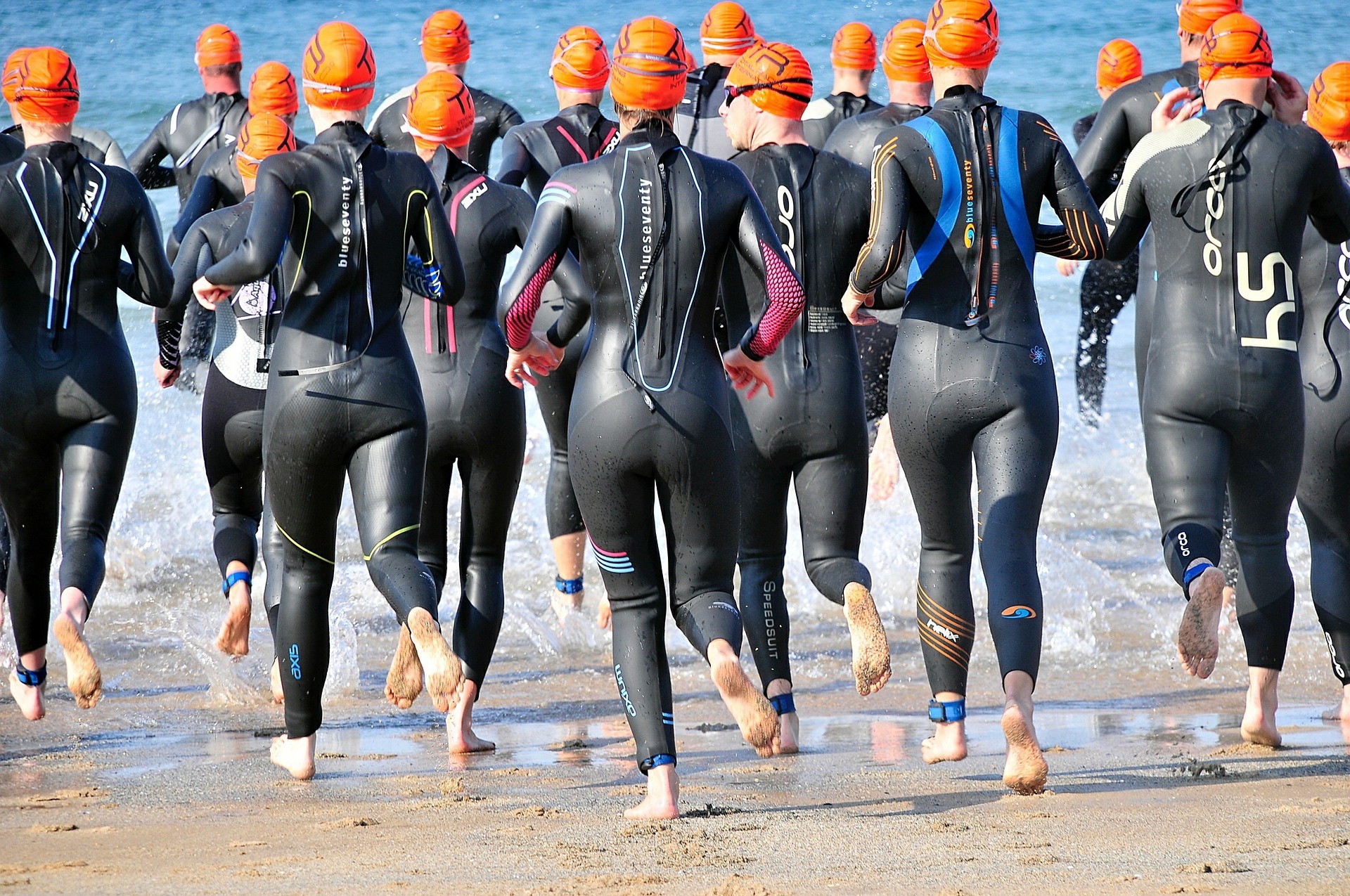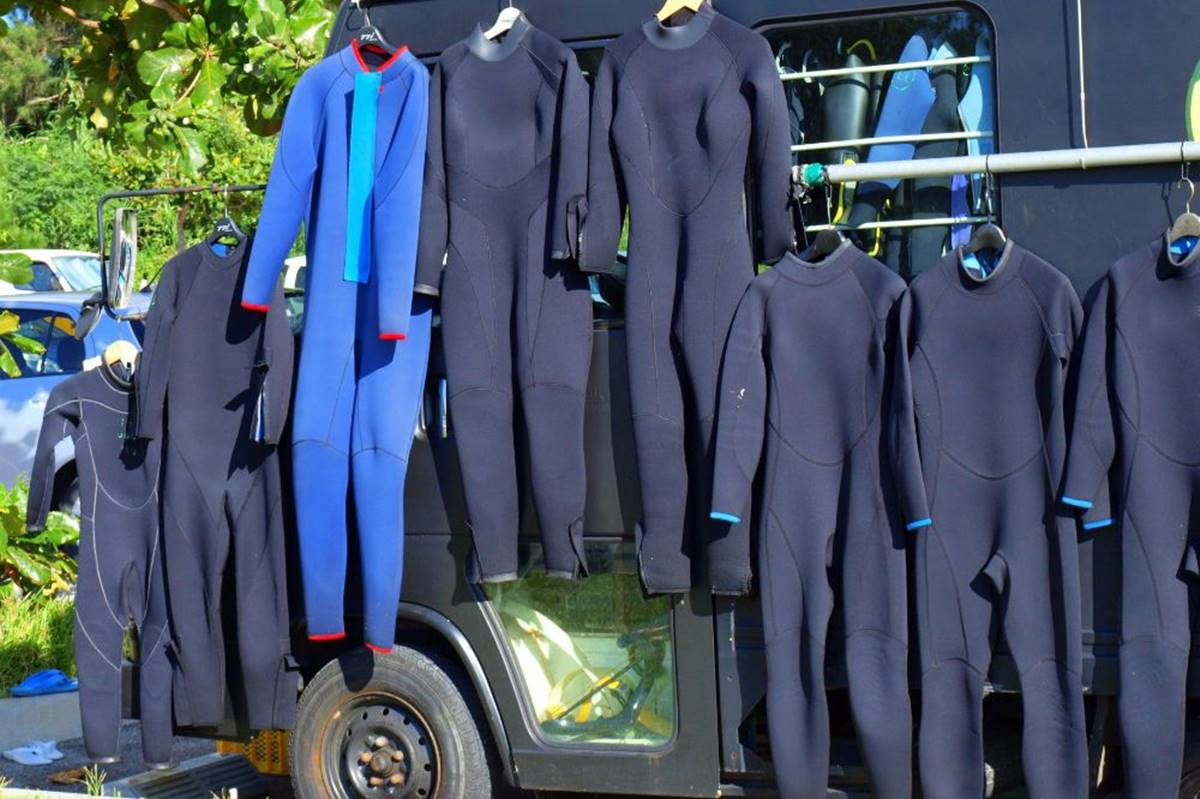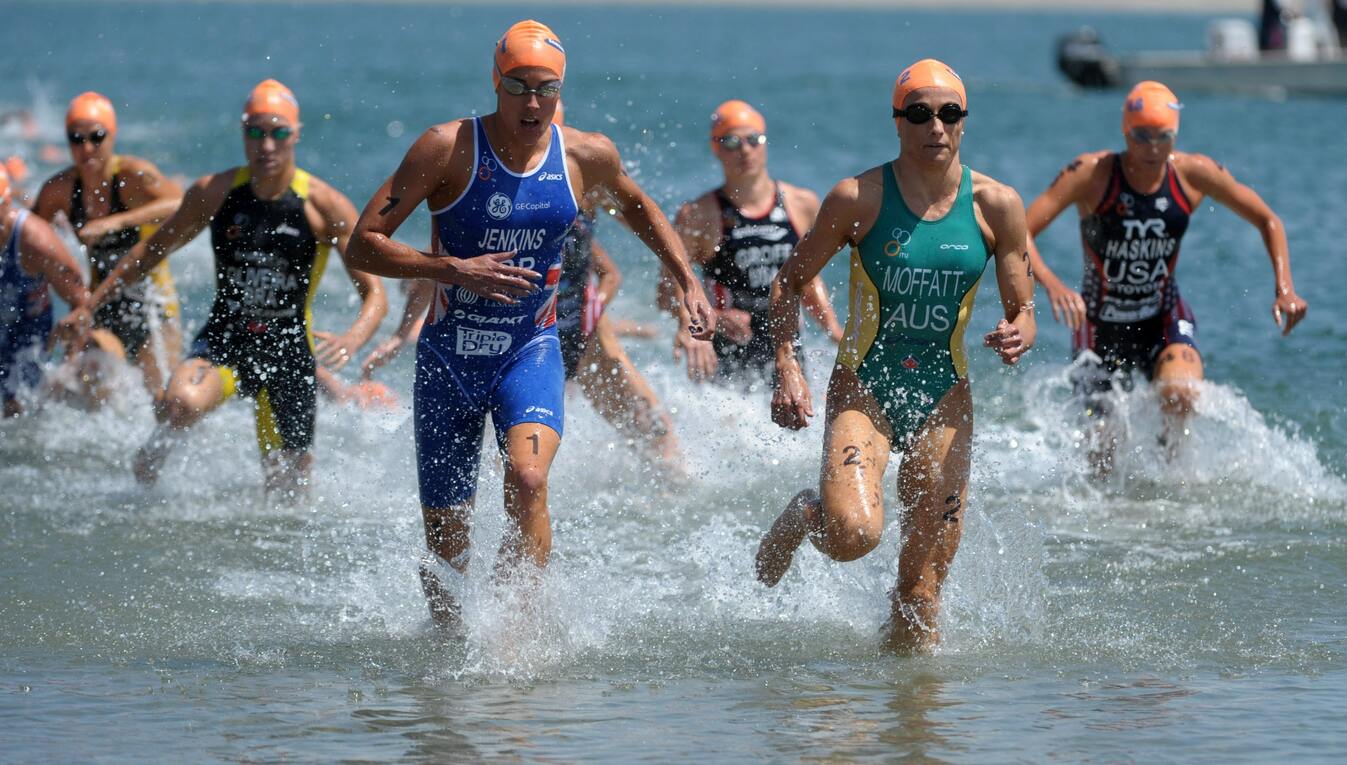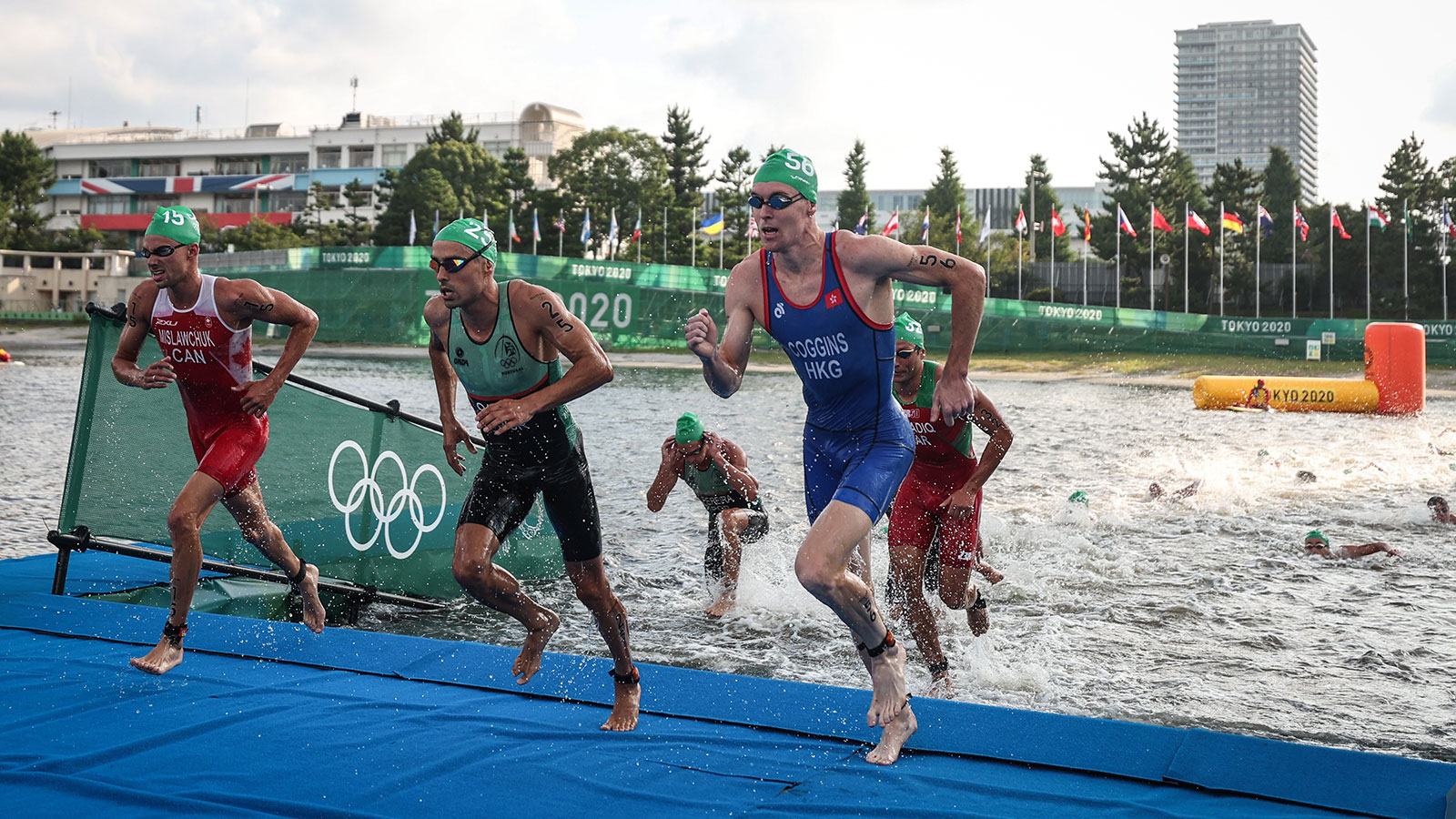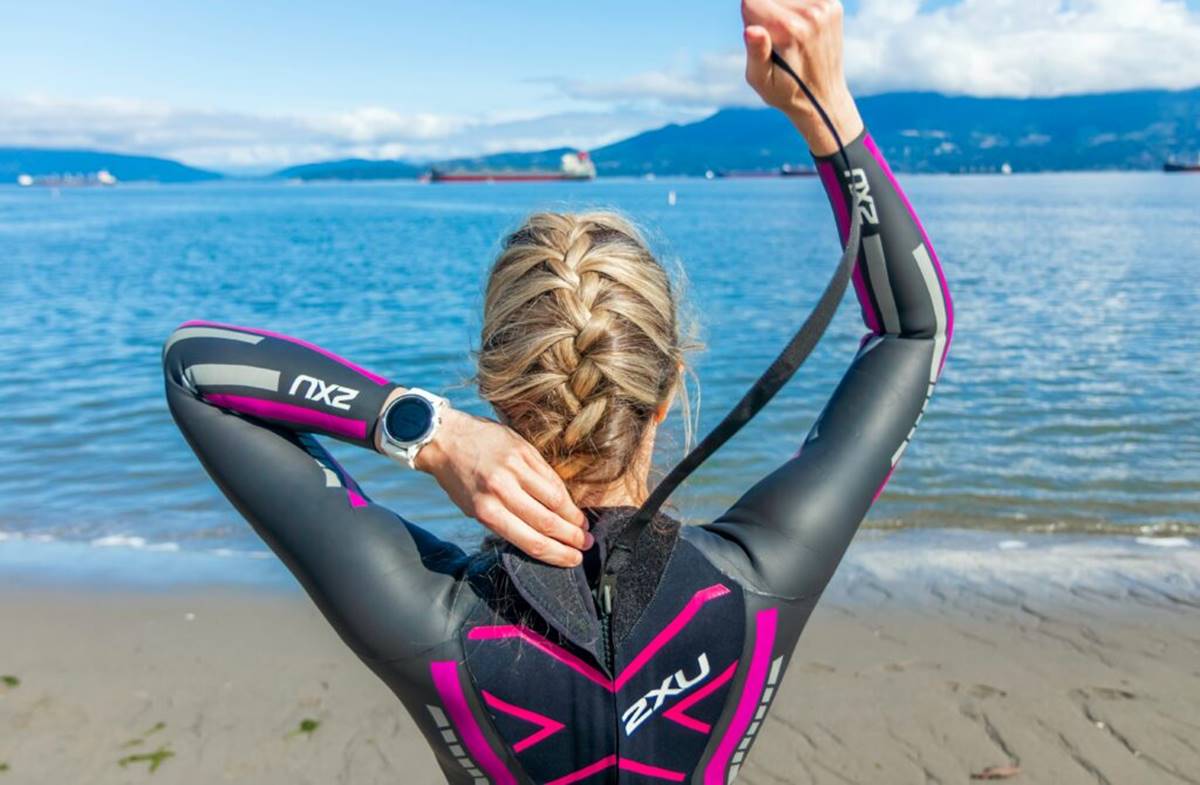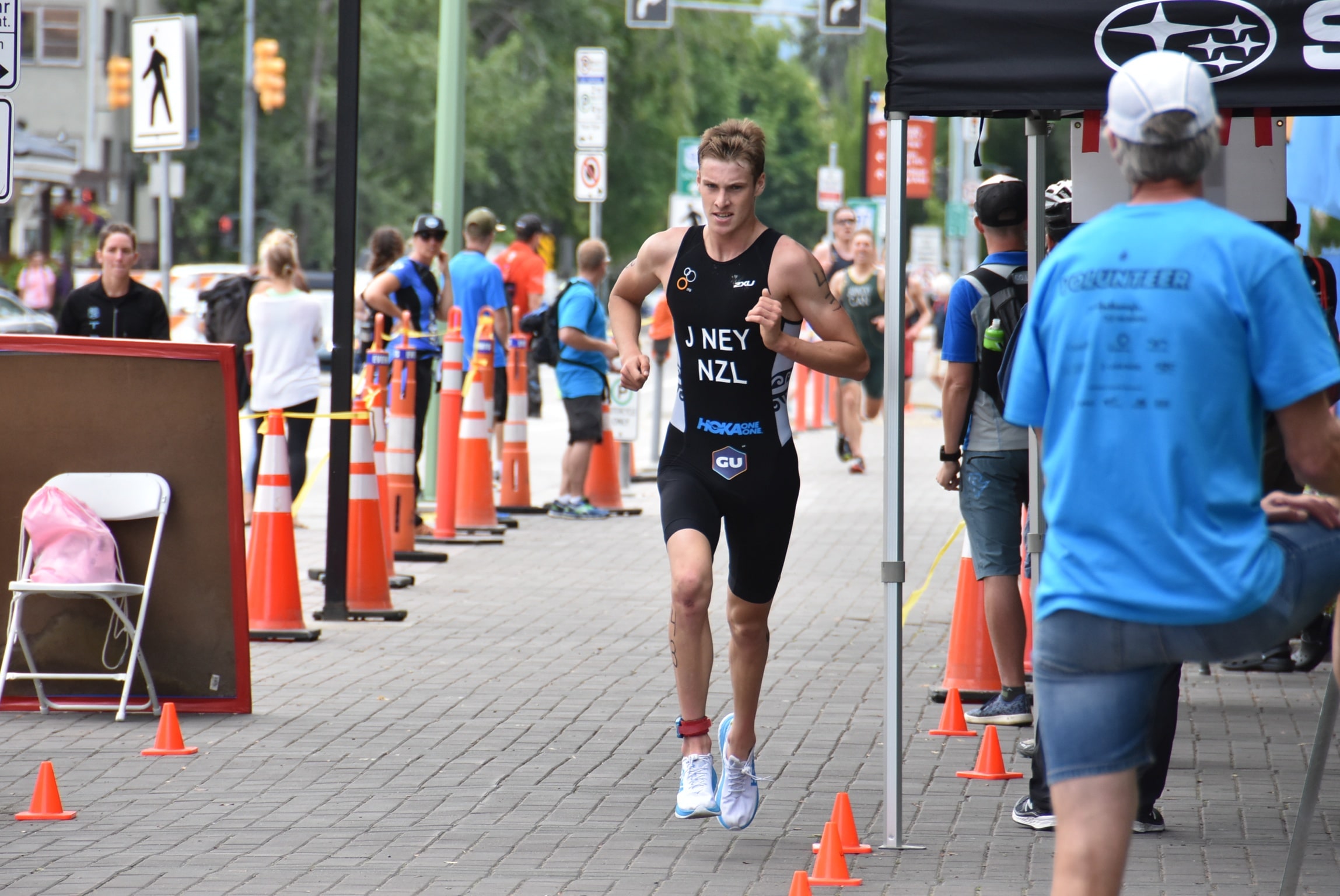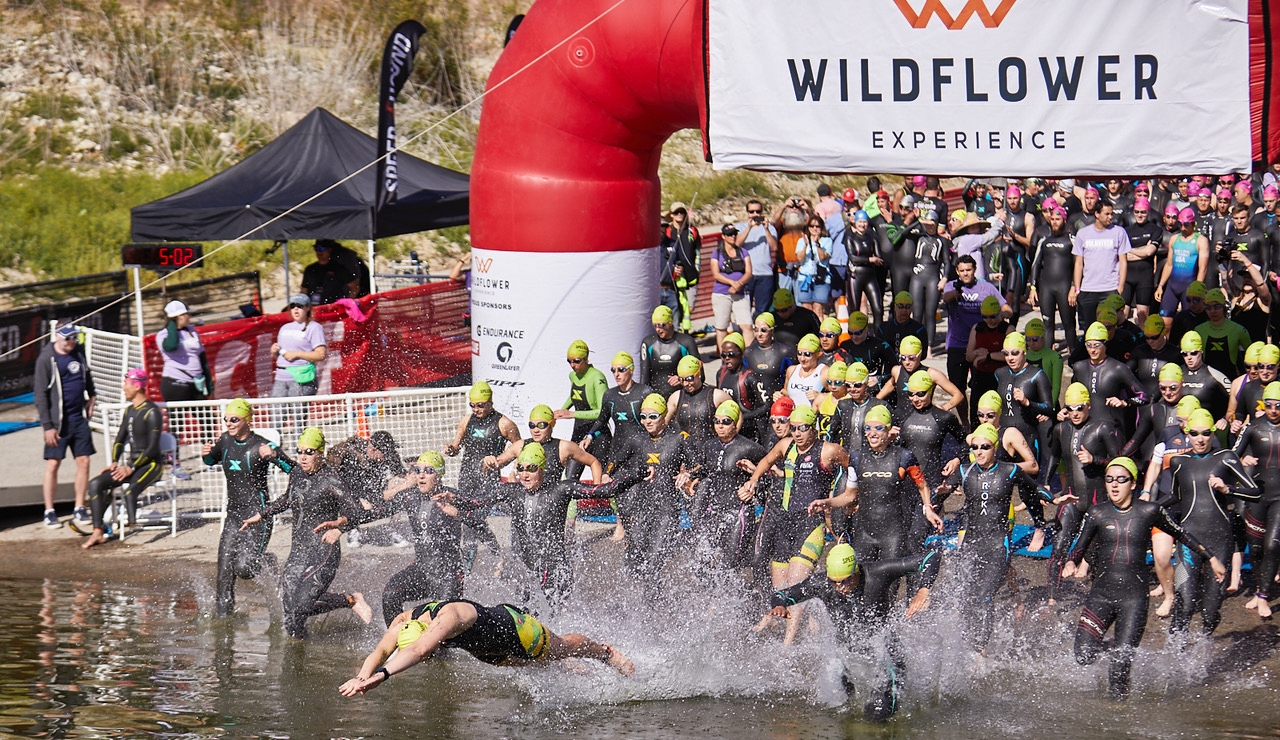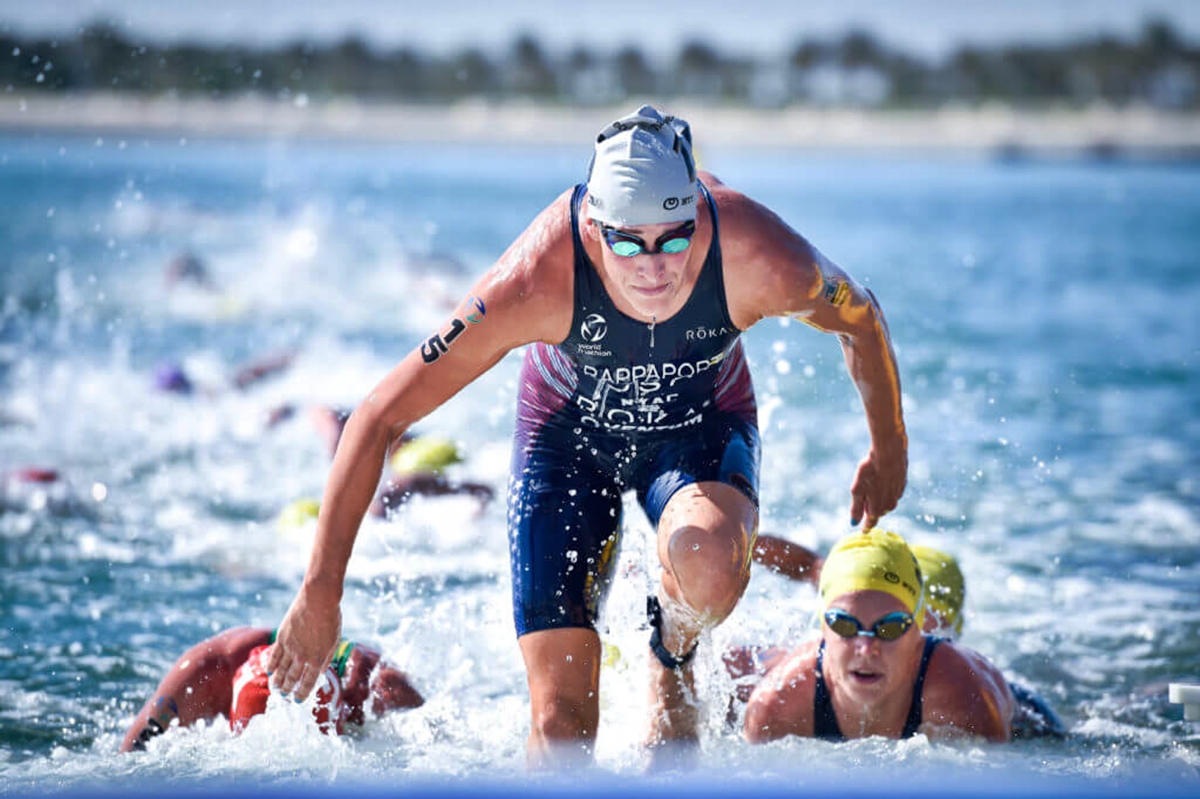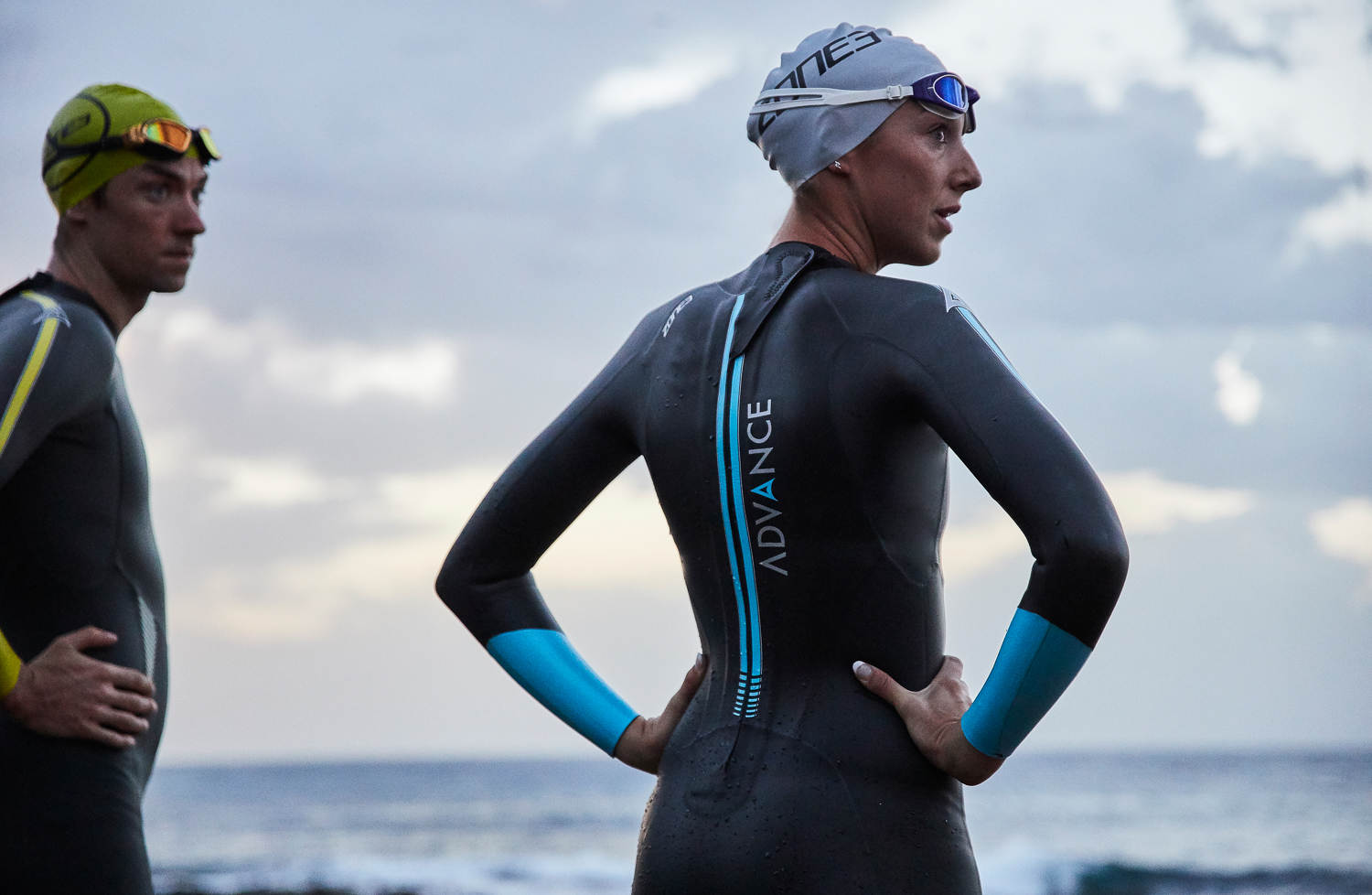

Featured
How To Choose A Triathlon Wetsuit
Modified: January 22, 2024
Featured: Learn how to choose the perfect triathlon wetsuit for your race, with our comprehensive guide and expert tips. Boost your performance and make a splash in the water!
Introduction
When it comes to triathlon training and racing, having the right gear can make all the difference in your performance. One essential piece of equipment that every triathlete needs is a triathlon wetsuit. Specifically designed for swimming, these wetsuits not only provide buoyancy and improve your speed in the water but also offer insulation to keep you warm in colder temperatures.
Choosing the right triathlon wetsuit can be a daunting task, especially with the myriad of options available in the market today. With factors ranging from fit to materials to additional features, it’s crucial to do your research and find the perfect wetsuit that meets your specific needs and preferences.
In this article, we will dive into the world of triathlon wetsuits and provide you with expert knowledge on how to choose the best one for your training and racing endeavors.
Understanding the Importance of a Triathlon Wetsuit
Before we delve into the specifics of choosing a triathlon wetsuit, it’s important to understand why it is such a crucial piece of gear for triathletes. Firstly, a well-fitting wetsuit can significantly improve your buoyancy in the water, helping you maintain a better body position and conserving energy. This allows you to swim more efficiently and with less effort.
Additionally, triathlon wetsuits are designed with improved hydrodynamics, reducing drag and enhancing your speed in the water. This can give you a competitive edge and help you shave off valuable seconds or even minutes from your swim time. Furthermore, the insulation provided by the wetsuit helps to keep you warm, especially in open water races or colder climates.
Overall, a triathlon wetsuit can greatly enhance your swimming performance, whether you are a beginner or a seasoned triathlete.
Understanding the Importance of a Triathlon Wetsuit
Before we delve into the specifics of choosing a triathlon wetsuit, it’s important to understand why it is such a crucial piece of gear for triathletes. Firstly, a well-fitting wetsuit can significantly improve your buoyancy in the water, helping you maintain a better body position and conserving energy. This allows you to swim more efficiently and with less effort.
Triathlon wetsuits are designed with special neoprene material that provides both flexibility and buoyancy. The buoyancy of the wetsuit lifts your body towards the water’s surface, making it easier to stay afloat and maintain a streamlined position. This translates to reduced drag and improved swim speed.
Additionally, the increased buoyancy provided by a triathlon wetsuit allows you to exert less energy during the swim leg of the triathlon. By conserving energy, you’ll have more in the tank for the bike and run portions of the race, which can ultimately lead to better overall performance.
Another key benefit of wearing a triathlon wetsuit is the insulation it provides. Open water swims can often be chilly, especially in cooler climates or at certain times of the year. Wearing a wetsuit helps to minimize heat loss and keep your body at an optimal temperature, allowing you to focus on your race without being distracted by the cold.
Moreover, a triathlon wetsuit offers an added layer of protection against potential hazards in the water. Whether it’s protecting your skin from unseen objects or providing a buffer against jellyfish stings, the wetsuit acts as a barrier, ensuring a safer and more enjoyable swim experience.
Overall, a triathlon wetsuit can greatly enhance your swimming performance, whether you are a beginner or a seasoned triathlete. It not only improves your buoyancy and hydrodynamics but also provides insulation and protection. Investing in a good-quality wetsuit that fits you well is a wise decision that will undoubtedly make a positive impact on your triathlon journey.
Factors to Consider When Choosing a Triathlon Wetsuit
Choosing the right triathlon wetsuit requires careful consideration of several factors. To ensure that you make an informed decision, here are key factors to keep in mind:
1. Flexibility: Look for a wetsuit that allows for unrestricted movement, particularly in the shoulders and arms. Opt for materials with high stretch capabilities, such as Yamamoto neoprene, as this will provide the flexibility needed for an efficient swim stroke.
2. Buoyancy: Consider the level of buoyancy that the wetsuit provides. Different wetsuits have varying degrees of buoyancy, which can impact your body position in the water. Determine whether you need more support in the legs or torso, depending on your swimming style and body composition.
3. Fit: A proper fit is essential for optimal performance. Ensure that the wetsuit fits snugly but not too tight, allowing for a full range of motion. Check for specific sizing guides provided by the manufacturer, as each brand may have slightly different measurements.
4. Thickness: Consider the thickness of the wetsuit, usually measured in millimeters. Thicker neoprene provides more insulation but may compromise flexibility. Choose a thickness suitable for the water temperatures in which you’ll be swimming.
5. Seams: Pay attention to the type of seams used in the wetsuit construction. Flatlock seams are comfortable but allow more water ingress, while glued and blind-stitched (GBS) or taped seams provide better water protection but can restrict movement.
6. Zipper: Decide between a back zip or a chest zip wetsuit. Back zip wetsuits are easier to put on and take off but may be less water-resistant. Chest zip wetsuits offer better water sealing but can be more challenging to don and doff.
7. Durability: Consider the quality and durability of the wetsuit. Look for reinforced areas, such as the knees and elbows, that are prone to wear and tear. A durable wetsuit will last longer and give you more value for your investment.
8. Budget: Determine your budget range and explore wetsuits within that range. While it’s important to invest in a good-quality wetsuit, there are options available at various price points. Assess the features that are most essential to you and make an informed decision based on your budget.
9. Reviews: Read reviews and seek recommendations from other triathletes or reputable sources. Hearing from people who have firsthand experience with different wetsuits can provide valuable insights and help you narrow down your options.
By considering these factors, you’ll be able to choose a triathlon wetsuit that fits your needs and maximizes your performance in the water. Remember, finding the right wetsuit is a personal journey, so take the time to test and try different options before making your final decision.
Assessing the Type of Triathlon Wetsuits Available
When it comes to triathlon wetsuits, there are generally two main types to consider: full suits and sleeveless suits. Each type offers its own advantages and disadvantages, so it’s important to understand the differences before making your decision.
1. Full Wetsuits:
- Coverage: Full wetsuits provide coverage for the entire body, from the neck down to the ankles.
- Insulation: With full coverage, these wetsuits offer superior insulation, making them suitable for colder water temperatures.
- Buoyancy: Full wetsuits tend to have more buoyancy due to the additional neoprene material, which can help improve body position in the water.
- Flexibility: Depending on the design and materials used, some full wetsuits offer excellent flexibility, allowing for a natural swim stroke.
- Recommended for: Full wetsuits are generally recommended for triathletes who swim in colder waters or prefer the added buoyancy and insulation.
2. Sleeveless Wetsuits:
- Arm Freedom: Sleeveless wetsuits provide unrestricted movement in the arms, allowing for a full range of motion during the swim leg.
- Heat Regulation: Sleeveless wetsuits offer less insulation, making them suitable for warmer water temperatures or triathletes who tend to overheat quickly.
- Increased Mobility: The absence of sleeves contributes to increased mobility in the shoulders, enabling a more efficient swim stroke.
- Flexibility: Sleeveless wetsuits often feature thinner and more flexible neoprene, enhancing comfort and ease of movement.
- Recommended for: Triathletes who swim in warmer waters or prioritize freedom of movement and flexibility often opt for sleeveless wetsuits.
Ultimately, the choice between a full wetsuit and a sleeveless wetsuit depends on your personal preferences, the water temperature you’ll be swimming in, and the level of flexibility and mobility you desire. It’s worth noting that some triathletes may have both types of wetsuits in their gear collection, using full wetsuits for colder races and sleeveless wetsuits for warmer events.
Before making a purchase, consider factors such as the competition rules (which may restrict the use of certain wetsuit types), the specific climate conditions of your upcoming races, and your own comfort and swimming style. Consulting with experienced triathletes or seeking advice from experts can also provide valuable insights to help you make an informed decision.
Remember, selecting the right type of triathlon wetsuit can enhance your swimming experience and contribute to a successful race, so take the time to evaluate your options and choose the one that best suits your needs.
Comparing Materials Used in Triathlon Wetsuits
The choice of material is a crucial aspect when it comes to triathlon wetsuits, as it directly impacts the suit’s flexibility, buoyancy, durability, and overall performance. Here are the common materials used in triathlon wetsuits:
1. Neoprene:
- Flexibility: Neoprene is known for its excellent stretch and flexibility, allowing for unrestricted movement during the swim leg.
- Buoyancy: The density and thickness of neoprene contribute to buoyancy, helping you maintain an efficient body position in the water.
- Insulation: Neoprene offers insulation, keeping your body warm by trapping a layer of water against your skin and using your body heat to warm it up.
- Durability: Quality neoprene is highly durable and resistant to wear and tear, ensuring that your wetsuit lasts for a long time.
2. Yamamoto Neoprene:
- Flexibility: Yamamoto neoprene is known for its superior flexibility, providing maximum movement and comfort in the water.
- Buoyancy: This type of neoprene offers excellent buoyancy, helping to maintain proper body position and improving swim efficiency.
- Lightweight: Yamamoto neoprene is lighter than traditional neoprene, reducing overall weight and enhancing comfort during races.
- Thermal Regulation: It has better thermal qualities, trapping less water and ensuring quicker drying, which is beneficial in colder conditions.
3. SCS Coating:
- Reduced Friction: A Smoothskin Coating (SCS) on the outside of the wetsuit reduces friction with the water, promoting faster and smoother swim strokes.
- Water Resistance: The SCS coating increases water repellency, reducing water absorption and maintaining the wetsuit’s lightweight feel throughout the swim.
- Durability: This coating also improves the durability of the wetsuit, making it more resistant to wear and tear caused by rigorous training or race conditions.
When choosing the material for your triathlon wetsuit, consider the water temperature and the specific demands of your race. Thicker neoprene and additional features like SCS coating are beneficial for colder conditions, while lightweight and highly flexible materials like Yamamoto neoprene are suitable for warmer races or those requiring maximum mobility.
It’s worth noting that the quality of the neoprene and construction can vary among brands. Researching and reading reviews about specific wetsuits can provide insights into the performance and durability of the materials used.
Ultimately, selecting a wetsuit with high-quality materials that offer the right balance of flexibility, buoyancy, insulation, and durability will ensure that you have a comfortable and efficient swim while competing in your triathlon.
Finding the Right Fit for Your Triathlon Wetsuit
One of the most critical aspects of choosing a triathlon wetsuit is finding the right fit. A well-fitting wetsuit not only enhances your swimming performance but also provides the necessary comfort and flexibility for a successful race. Here are some key considerations when it comes to finding the right fit for your triathlon wetsuit:
1. Take Accurate Measurements:
Before purchasing a wetsuit, it’s important to accurately measure your body to determine the appropriate size. Measure your height, weight, chest, waist, and hips, and refer to the manufacturer’s sizing chart to find your ideal fit. Keep in mind that sizing can vary between brands, so always consult the specific brand’s guidelines.
2. Snug but Not Restrictive:
A wetsuit should fit snugly to maintain proper insulation and reduce drag in the water. However, it should never feel overly tight or restrictive, as this can restrict your movement and impede your swim stroke. Ensure that the wetsuit allows for a full range of motion in the arms, shoulders, and legs.
3. Consider Body Shape:
Different wetsuits cater to different body types. Some may offer variations for broader shoulders, longer torso, or more muscular legs. Understanding your body shape can help narrow down your options and find a wetsuit that accommodates your specific needs.
4. Try It On and Test It Out:
If possible, try on the wetsuit before making a purchase. Wear it as you would during a race and mimic the swimming motion to assess its comfort and fit. Pay attention to areas that may feel too tight or cause discomfort. Additionally, try different sizes if needed to find the best fit.
5. Seek a Proper Seal:
Ensure that the wetsuit provides a tight seal around the neck and wrists to prevent water ingress. A well-sealed wetsuit keeps you warmer and reduces drag. Look for features like adjustable neck closures or smoothskin seals that provide a secure and comfortable fit.
6. Allow for Minor Alterations:
In some cases, minor alterations may be necessary to achieve the perfect fit. Seek the advice of a professional who specializes in wetsuit alterations if you need to make adjustments to certain areas of the wetsuit for a more customized fit.
7. Check for Proper Lengths:
Ensure that the wetsuit is the correct length for your body, especially in the arms and legs. The wetsuit should extend to the wrists and ankles without excessive bunching or restriction. If you find that the wetsuit is too long or too short, consider trying a different size or brand.
Finding the right fit for your triathlon wetsuit may require some trial and error, as each individual’s body shape and preferences are unique. Don’t hesitate to seek expert advice from wetsuit specialists or experienced triathletes who can provide valuable insights and recommendations based on their own experiences.
Remember, investing the time and effort to find the perfect fit will greatly enhance your comfort, performance, and enjoyment during your triathlon.
Considering Budget and Value for Money
When it comes to choosing a triathlon wetsuit, it’s important to consider your budget and seek value for your money. While higher-priced wetsuits often come with advanced features and premium materials, there are options available at different price ranges that can still meet your needs. Here are some key factors to consider when evaluating the budget and value for money:
1. Identify Your Needs:
Start by determining your specific needs and priorities. Consider the water temperature, the frequency of your races, and the level of performance you’re aiming for. This will help you assess which features are essential and where you can potentially compromise to fit within your budget.
2. Quality vs. Price:
While it’s important to stay within your budget, remember that higher-priced wetsuits often offer better quality in terms of materials, construction, and performance. However, it’s not always necessary to splurge on the most expensive option if you’re a beginner or a casual triathlete. Look for wetsuits that strike a balance between price and quality to get the best value for your money.
3. Features that Matter:
Consider the specific features that are crucial for your performance and comfort. For example, if you swim in colder waters, prioritize wetsuits with good insulation and thermal properties. If flexibility is your priority, look for wetsuits with high-stretch neoprene materials. Understanding the features that align with your needs will help you make informed decisions within your budget range.
4. Brand Reputation:
Consider the reputation of the brand and the feedback from other users. Established brands with a strong reputation often provide reliable products with good customer support. Reading reviews and seeking recommendations from experienced triathletes can provide valuable insights and help you make an informed decision.
5. Longevity and Durability:
Assess the durability and expected lifespan of the wetsuit. While a lower-priced option may seem attractive initially, spending a little more for a wetsuit with better durability can ultimately save you money in the long run. A durable wetsuit will withstand regular use and maintain its performance over time, ensuring that you get more value from your investment.
6. Warranty and Return Policy:
Check the warranty and return policy of the wetsuit. A reputable brand will often offer a warranty against manufacturing defects. Additionally, ensure that the seller has a fair return policy in case the wetsuit doesn’t fit or meet your expectations. This provides added peace of mind and ensures that you can make adjustments if necessary.
By considering these factors, you can strike a balance between your budget and the value you receive from your chosen triathlon wetsuit. Remember, it’s not always about the price tag; it’s about finding the wetsuit that meets your needs and provides the performance and comfort you desire without compromising your financial situation.
Evaluating Additional Features and Accessories
When choosing a triathlon wetsuit, it’s important to consider the additional features and accessories that can enhance your overall experience and performance. While these may not be the primary factors in selecting a wetsuit, they can certainly add value and convenience. Here are some features and accessories to evaluate:
1. Additional Buoyancy Panels:
Some wetsuits come with strategically placed buoyancy panels, typically in the chest or thigh area. These panels provide extra lift and support in specific areas, improving body positioning and swim efficiency. Consider whether this feature aligns with your swimming style and if the added buoyancy will benefit your performance.
2. Smoothskin Coating:
A Smoothskin Coating (SCS) on the outside of the wetsuit reduces friction with the water, promoting faster and smoother swim strokes. This feature can enhance your hydrodynamics and contribute to improved speed. If you prioritize speed and performance, look for wetsuits with this coating.
3. High-Visibility Colors:
Some wetsuits come in high-visibility colors, making you more noticeable to other swimmers, support crews, and safety personnel. This feature is especially advantageous in open water races where visibility is crucial. Consider whether this feature is important to you, particularly if you swim in busy or crowded race environments.
4. Easy-Release Zippers:
Look for wetsuits with easy-release zippers that allow for quick and effortless removal during transition. These zippers typically have longer pull tabs or cords that can be easily grasped and pulled down, saving valuable time and energy. If fast transitions are a priority for you, consider wetsuits with this feature.
5. Ankle and Wrist Seals:
Consider wetsuits with ankle and wrist seals designed to reduce water ingress. These seals help to keep the wetsuit in place and prevent water from flushing in and out, keeping you warmer and reducing drag. Look for wetsuits with adjustable or tight-fitting seals to ensure a secure and comfortable fit.
6. Built-in Storage:
Some wetsuits offer pockets or built-in storage solutions for carrying small items like energy gels, keys, or navigation devices. These storage options can be convenient during longer races or training sessions. Assess whether this feature aligns with your specific needs and preferences.
7. Wetsuit Gloves, Caps, and Booties:
Consider whether you may require additional accessories such as wetsuit gloves, caps, or booties. These accessories can provide extra warmth and protection in colder water conditions. Ensure that the wetsuit you choose is compatible with these accessories if you anticipate needing them.
Remember, while additional features and accessories can enhance your experience, it’s important to prioritize the primary factors such as fit, flexibility, and buoyancy. Evaluate these additional features based on their relevance to your swimming style, race conditions, and personal preferences.
By assessing these features and accessories, you can determine which ones align with your needs and enhance your overall triathlon experience.
Seeking Expert Advice and Recommendations
When it comes to choosing a triathlon wetsuit, seeking expert advice and recommendations can provide valuable insights and guidance. Experienced triathletes, coaches, and wetsuit specialists can offer firsthand knowledge and expertise to help you make an informed decision. Here are some ways to seek expert advice:
1. Join Triathlon Communities:
Participate in online forums, social media groups, or local triathlon clubs where you can connect with experienced triathletes. These communities are a great platform to seek advice, ask questions, and gain insights into different wetsuit brands, models, and features. Engaging in discussions allows you to tap into a wealth of knowledge from individuals with practical experience.
2. Consult with Coaches:
Reach out to triathlon coaches or swim coaches who can provide expert guidance. These professionals have extensive knowledge of triathlon gear, including wetsuits, and can offer personalized recommendations based on your level of experience, races, and swimming abilities. They can also provide insights into the specific features or materials that may suit your needs.
3. Visit Specialty Stores:
Visit specialty triathlon stores or wetsuit retailers where you can interact with experts who are well-versed in wetsuit technology and fit. These professionals can assess your body type, take measurements, and recommend wetsuits that are most suitable for your needs. They can also assist you in trying on different wetsuits to find the perfect fit.
4. Attend Triathlon Expos or Events:
Take advantage of triathlon expos or events where you can interact with representatives from wetsuit brands. These events often provide opportunities for you to try on different wetsuits, ask questions, and receive expert advice. You may even get the chance to test swim in demo suits to experience the fit and feel in the water.
5. Read Reviews and Expert Opinions:
Read reviews and seek expert opinions from reputable sources such as triathlon magazines, websites, or independent gear reviewers. These platforms often conduct in-depth product evaluations, comparing different wetsuits’ performance, fit, and value for money. Pay attention to reviews that align with your specific needs and preferences.
6. Consider Wetsuit Demo or Rental Programs:
Some retailers or brands offer wetsuit demo or rental programs, allowing you to try out various wetsuits before making a final purchase. This hands-on experience can provide invaluable insights into the performance, fit, and comfort of different wetsuits. Take advantage of these opportunities to make an informed decision based on your personal experience.
Remember, expert advice and recommendations can supplement your own research, helping you navigate through the vast array of options available in the market. The knowledge and insights gained from experts can guide you towards selecting a triathlon wetsuit that suits your needs, enhances your performance, and maximizes your swimming experience.
Conclusion
Choosing the right triathlon wetsuit is a key decision for any triathlete. The right wetsuit can significantly enhance your performance, improve your swimming efficiency, and provide the necessary warmth and protection in open water or colder temperatures. By considering various factors, you can find a wetsuit that meets your specific needs and preferences.
Start by understanding the importance of a triathlon wetsuit, including its role in buoyancy, speed, and insulation. Evaluate factors such as flexibility, buoyancy, fit, and thickness when comparing different wetsuit options. Consider the materials used in wetsuit construction, such as neoprene and Yamamoto neoprene, and how they impact flexibility, buoyancy, and durability.
Ensure that the wetsuit you choose fits you well and allows for a full range of motion. Consider additional features like smoothskin coatings, additional buoyancy panels, or easy-release zippers that can enhance your swimming experience. Take into account your budget and seek the best value for your money, considering the quality, reputation, and durability of the wetsuit.
Don’t hesitate to seek expert advice and recommendations, whether from experienced triathletes, coaches, or wetsuit specialists. Engage in triathlon communities, consult with experts, and visit specialty stores to gain valuable insights and assistance in finding the right wetsuit for you.
In conclusion, choosing a triathlon wetsuit requires careful consideration of various factors, including fit, materials, additional features, and budget. By taking the time to research, try on different options, and seek expert advice, you can find a wetsuit that enhances your swimming performance, provides comfort and flexibility, and contributes to a successful and enjoyable triathlon race.
